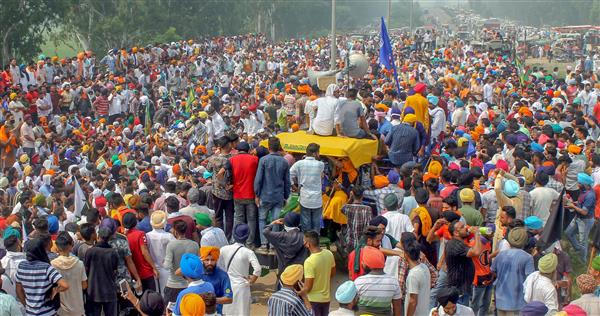The Aam Aadmi Party formed a new government in Punjab after ousting the Congress party. Just when AAP was getting started with its governance in the state, a clash between two radical groups in Patiala has caused a stir in the state politics.
On 29th April, tension formed near a Kali Mata temple in Patiala when radical Sikh elements stepped out in large numbers to oppose the Khalistan Murdabad March organised by a group that has recognised itself as Shiv Sena. A few members from the BJP were also said to be involved. The two groups got into a violent tussle that led to them pelting stones and waving swords at each other.
Harish Singla, the executive president, was the man beind this anti-separatist march that started from Patiala’s Arya Samaj Chowk and headed to the Kali Devi temple. Singla said, “The Shiv Sena will never allow Khalistan to be formed in Punjab or anywhere in India.”
After the violence erupted, the police had to fire in open air to bring the angry mob under control. A curfew was imposed in the city on Friday at 7 pm and was lifted at 6 am on Saturday. The mobile internet and SMS services too were blocked in the city to keep rumor-mongering at bay, the officials said. All mobile internet and SMS services, except voice calls, remained suspended from 9:30 am till 6 pm. This was also done to maintain law and order and peace in the city.
On the same day when the clash broke out, Harish Singla was arrested.
Calling this whole event political and not communal, The Chief Minister of Punjab tweeted, “The incident of clashes in Patiala are deeply unfortunate. I spoke with the DGP, peace has been restored in the area. We are closely monitoring the situation and will not let anyone create disturbance in the state. Punjab’s peace and harmony is of utmost importance.”
But what triggered this clash?
It was the march that primarily triggered the clash. According to The Indian Express, the march was conducted to counter the alleged announcement by the outlawed overseas group ‘Sikhs for Justice’ to mark the ‘foundation day of Khalistan’ on April 29. This is not the first time that such clash has emerged over the Khalistan issue.
What is the Khalistan issue?
It is a fight for a separate Sikh state that owes its birth to the Punjabi Suba Movement. The Akali Dal – a Sikh-dominated political party – set up a movement to create a separate Sikh Suba or Province. The States Reorganization Commission rejected the Akali Dal’s demand of a seperate Sikh province. However, after a series of violent protests, the Indira Gandhi government relented in 1966. As a result, the state was trifurcated into Punjabi-majority Punjab, Hindi-majority Haryana and the Union Territory of Chandigarh. Some hilly regions of the state were also merged into Himachal Pradesh.
Since there, the conflict for the formation of Khalistan has never really died out. It keeps resurfacing from time to time. Now, althought the Shiromani Akali Dal and its rival groups such as SAD (Amritsar), Dal Khalsa have been instrumental in fighting for Khalistan, the state of Punjab has seen the rise in protests from Sikh bodies, activists and social media influencers who come toghether depsite lacking a common ideology.
Commenting on the recent clashes, the CM of the state has vowed to the citizens that his government would not let anyone create a disturbance and maintain peace and calm.





























